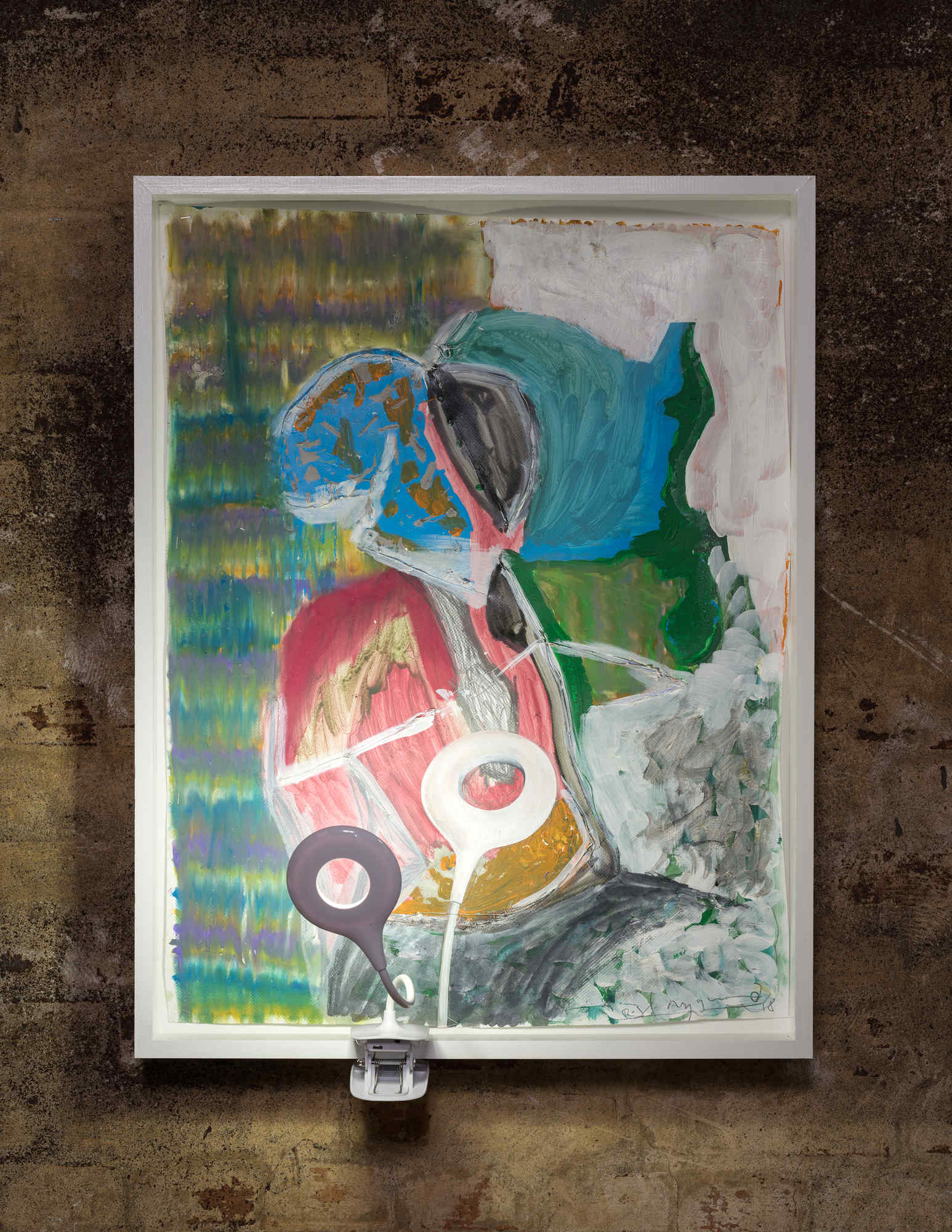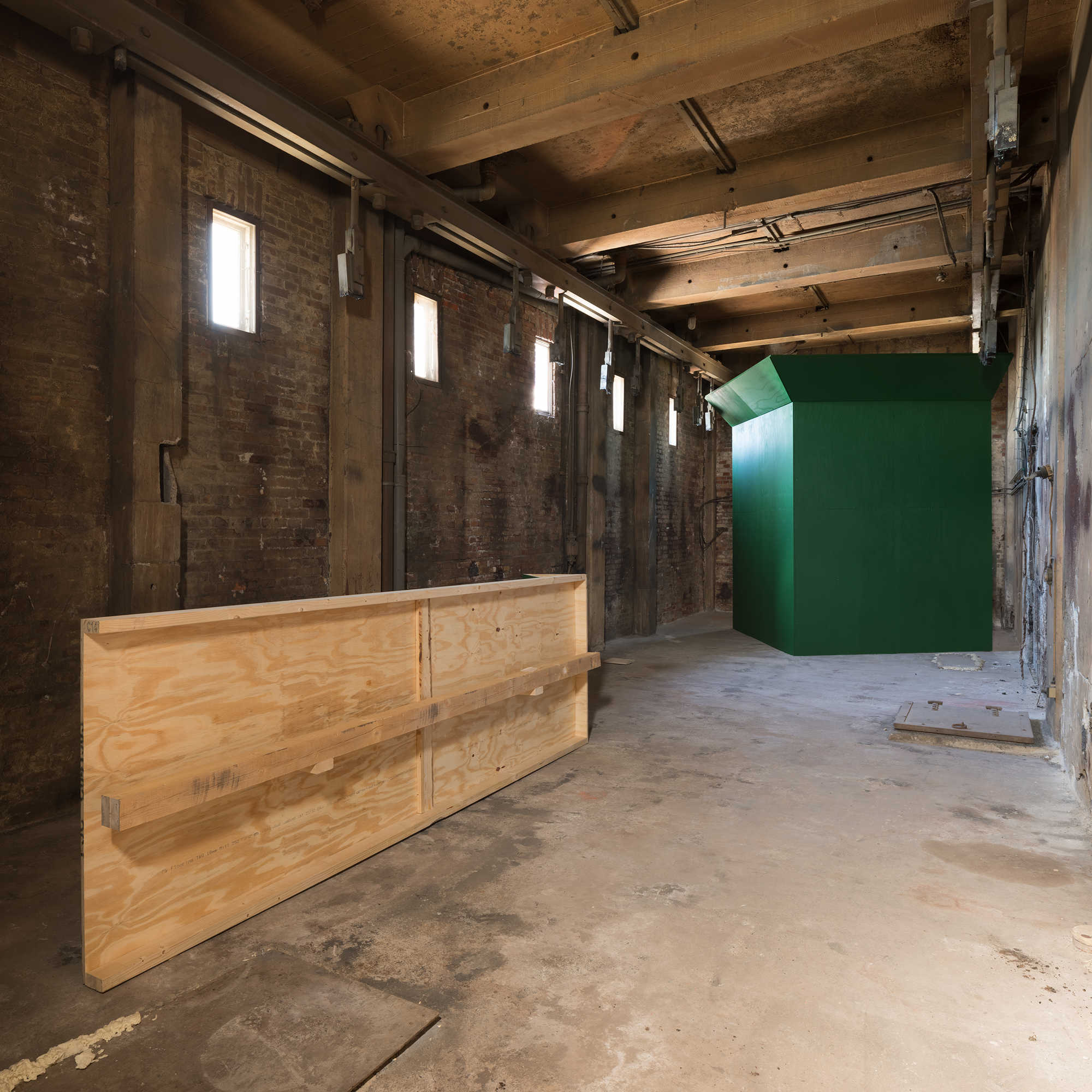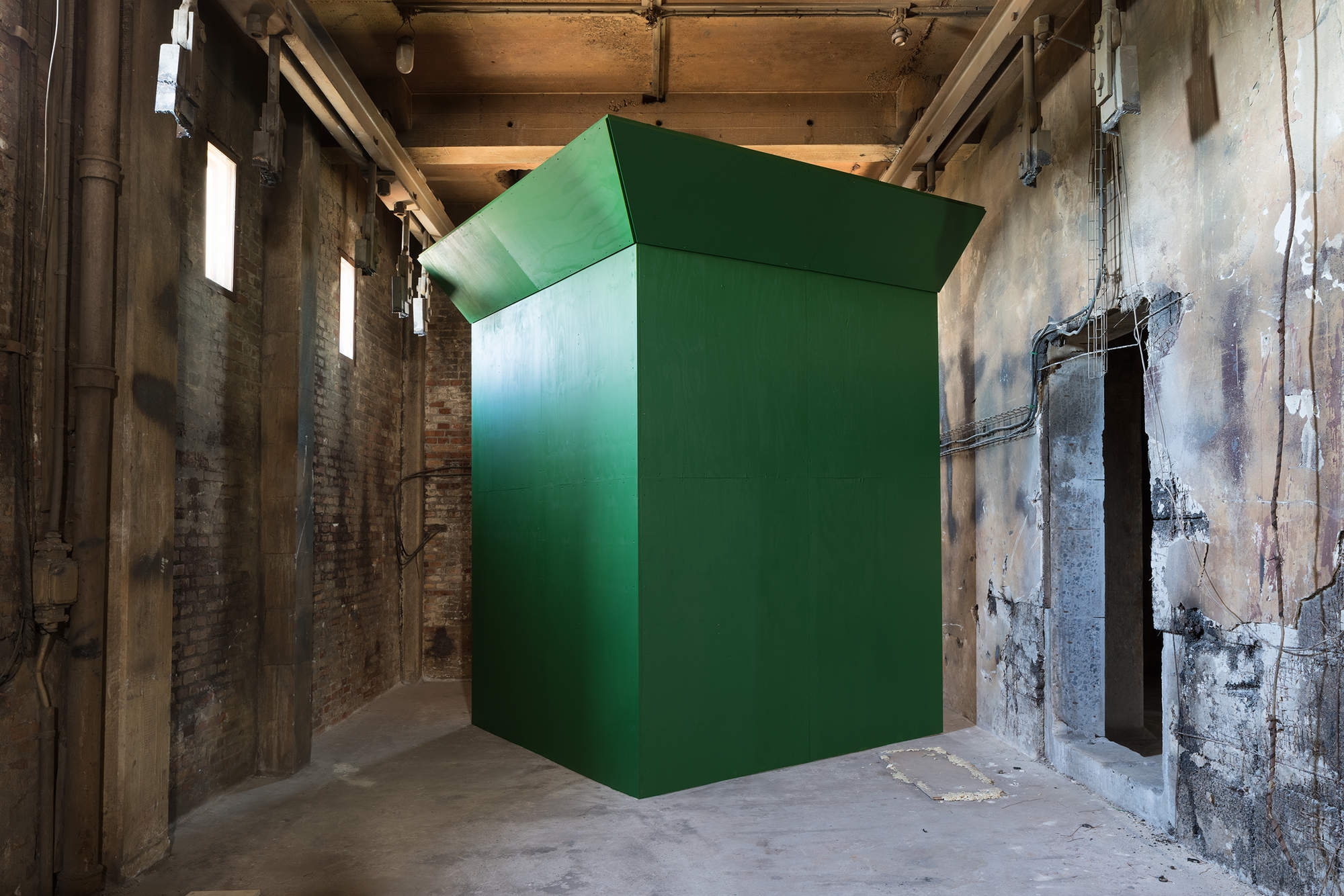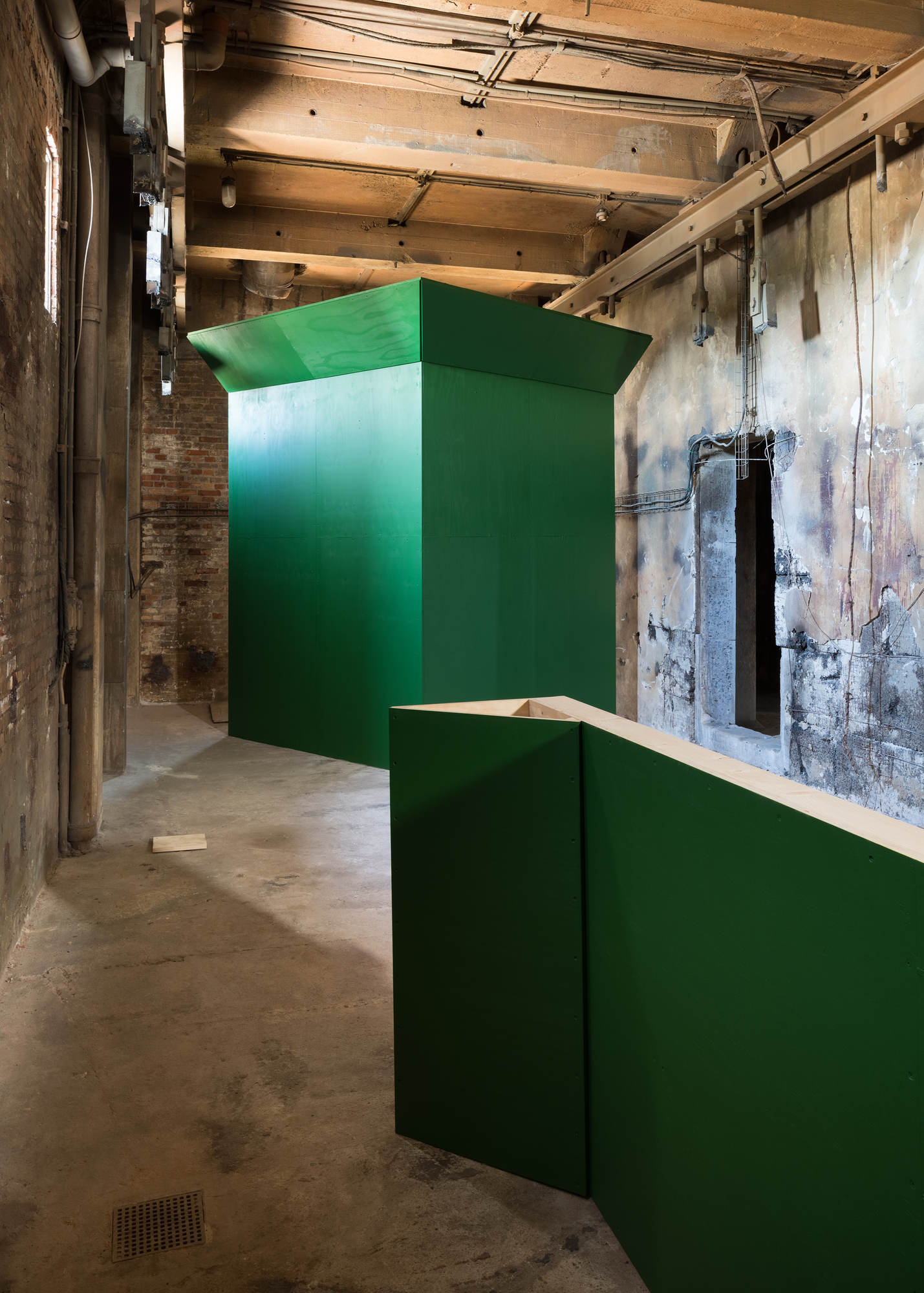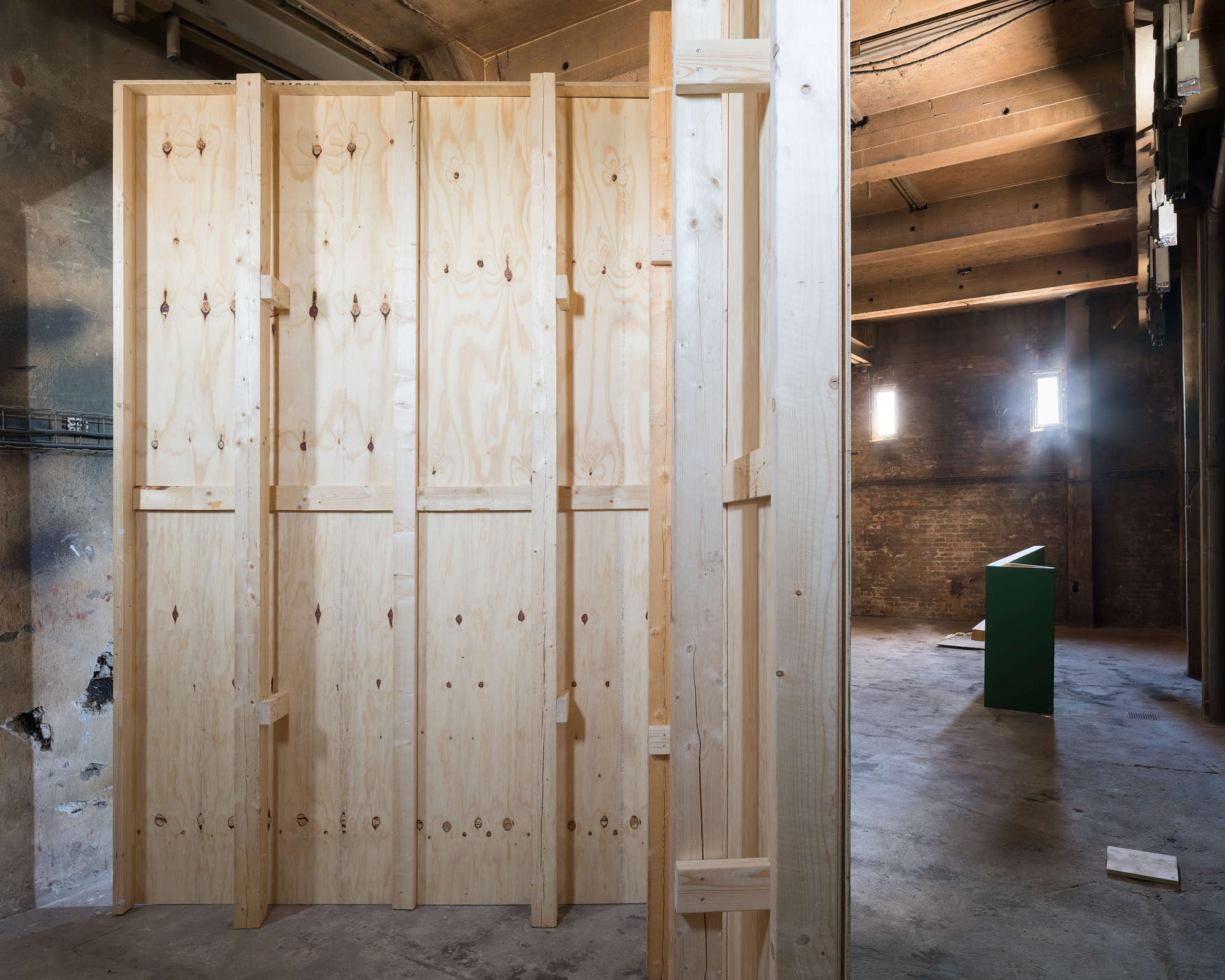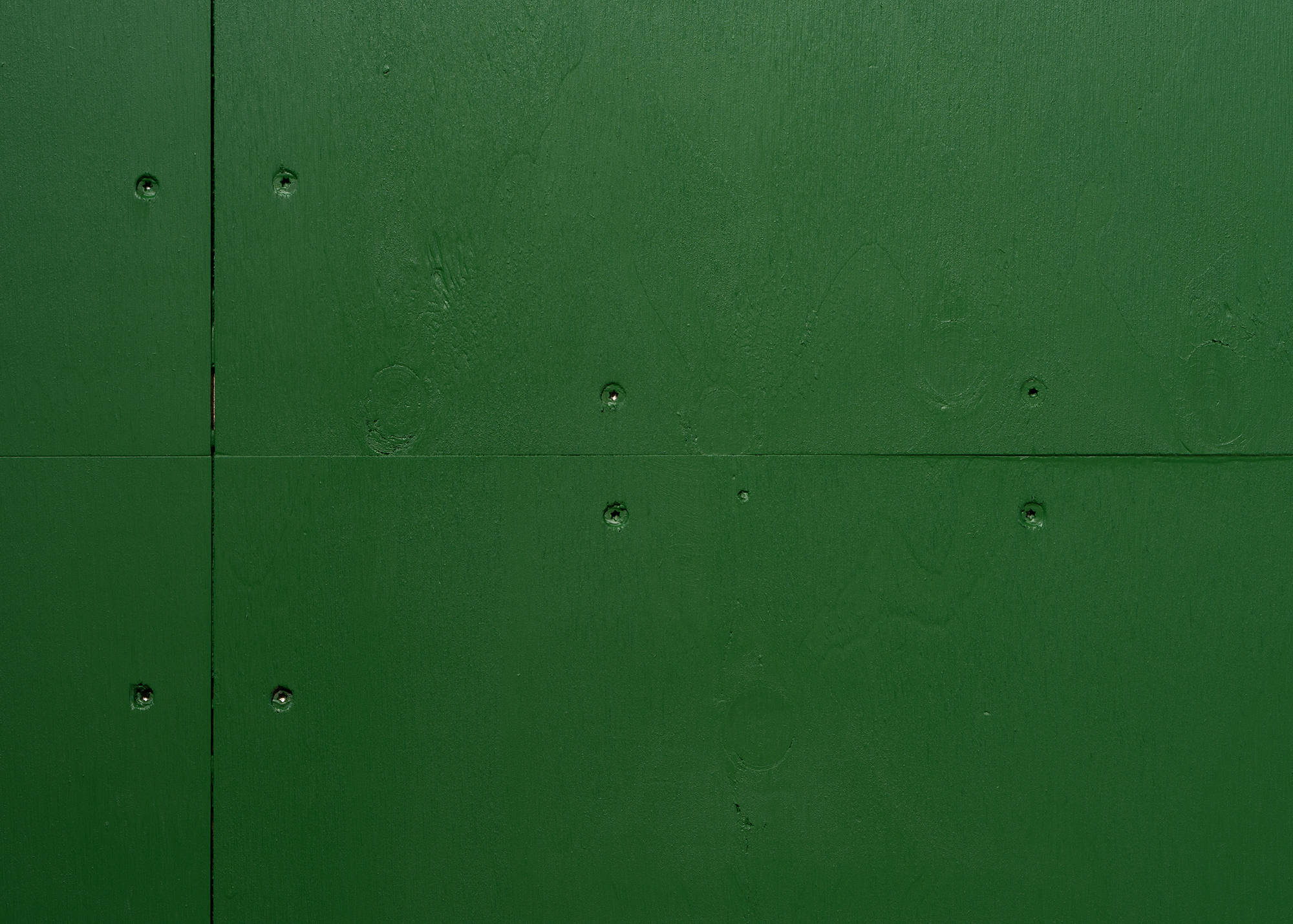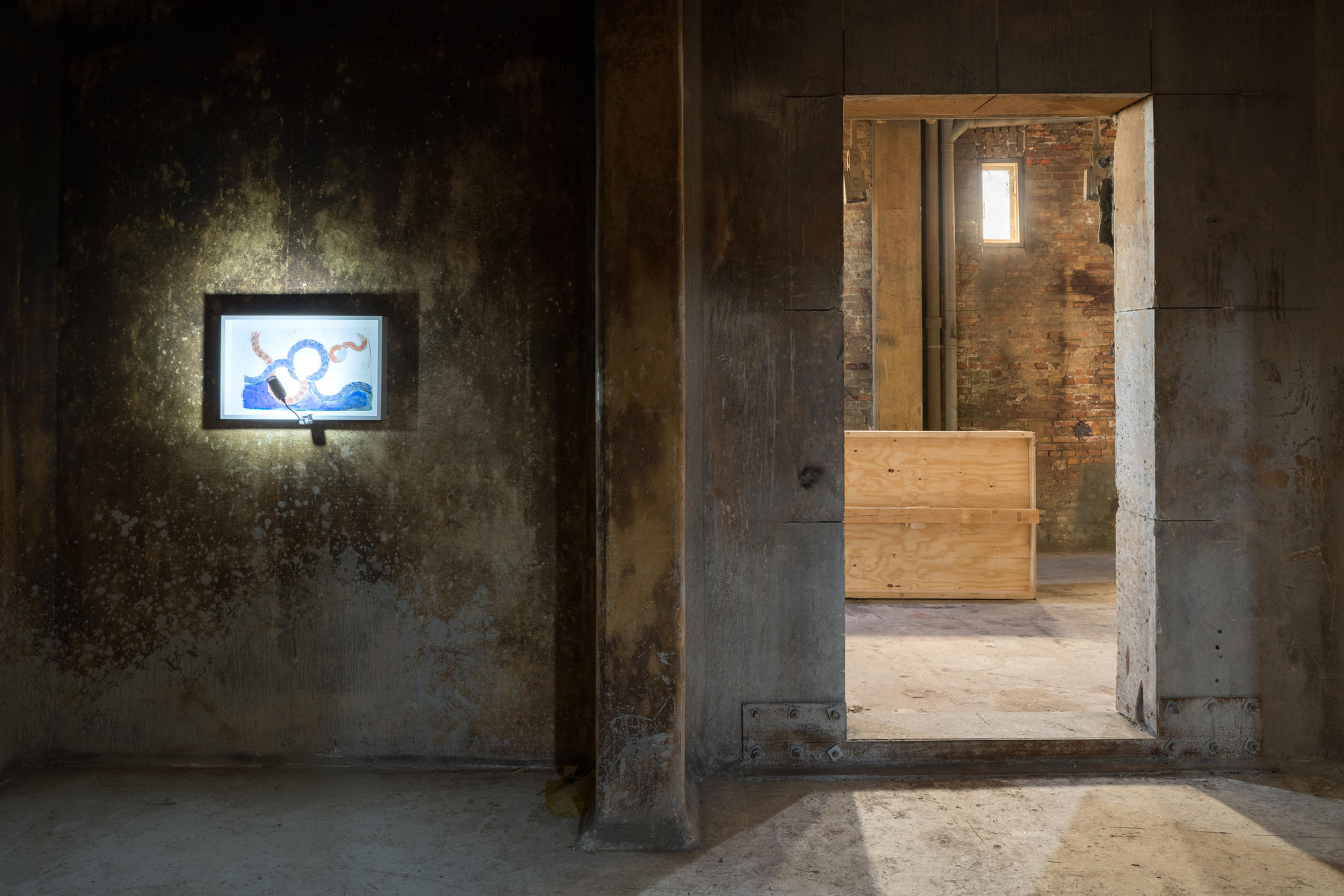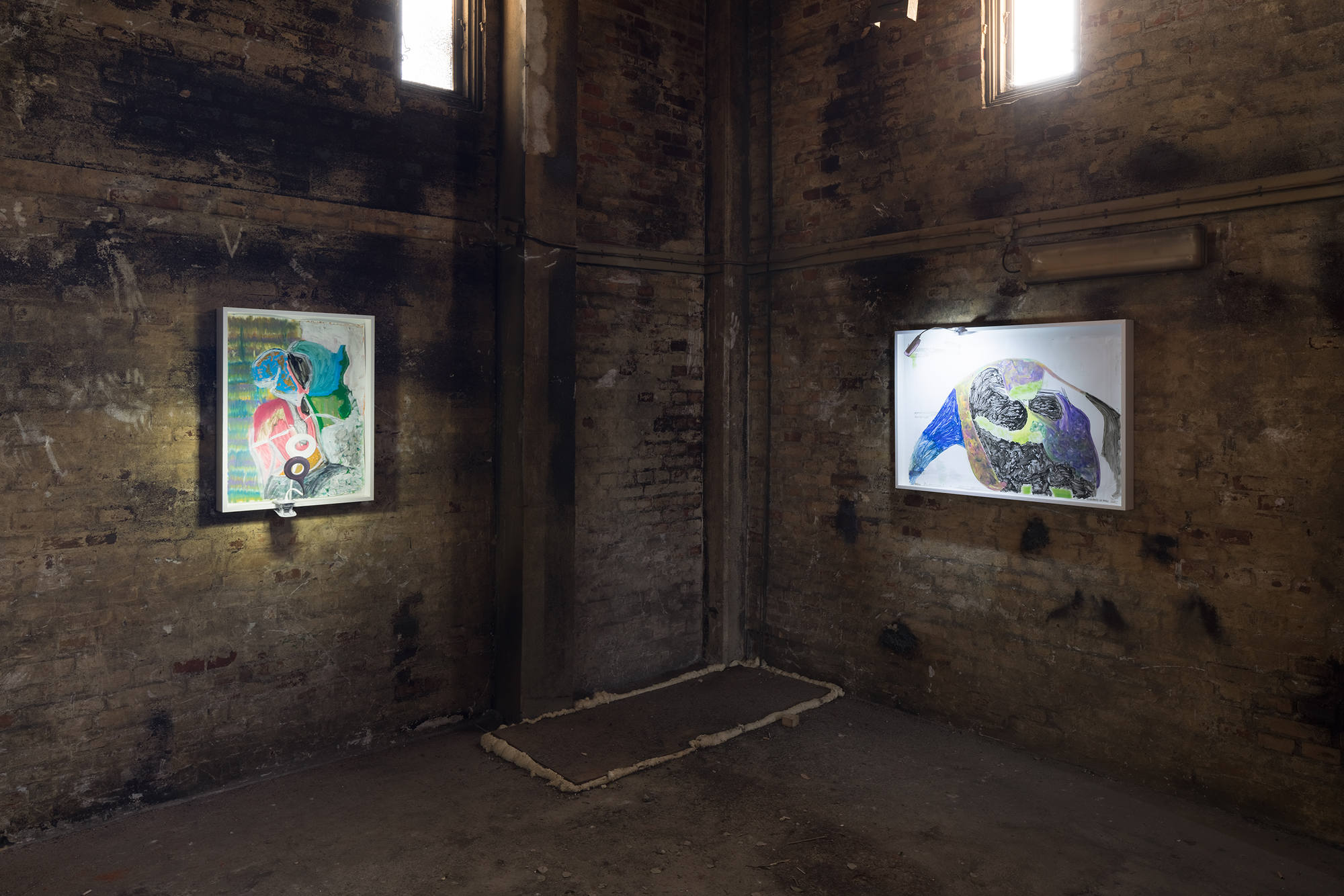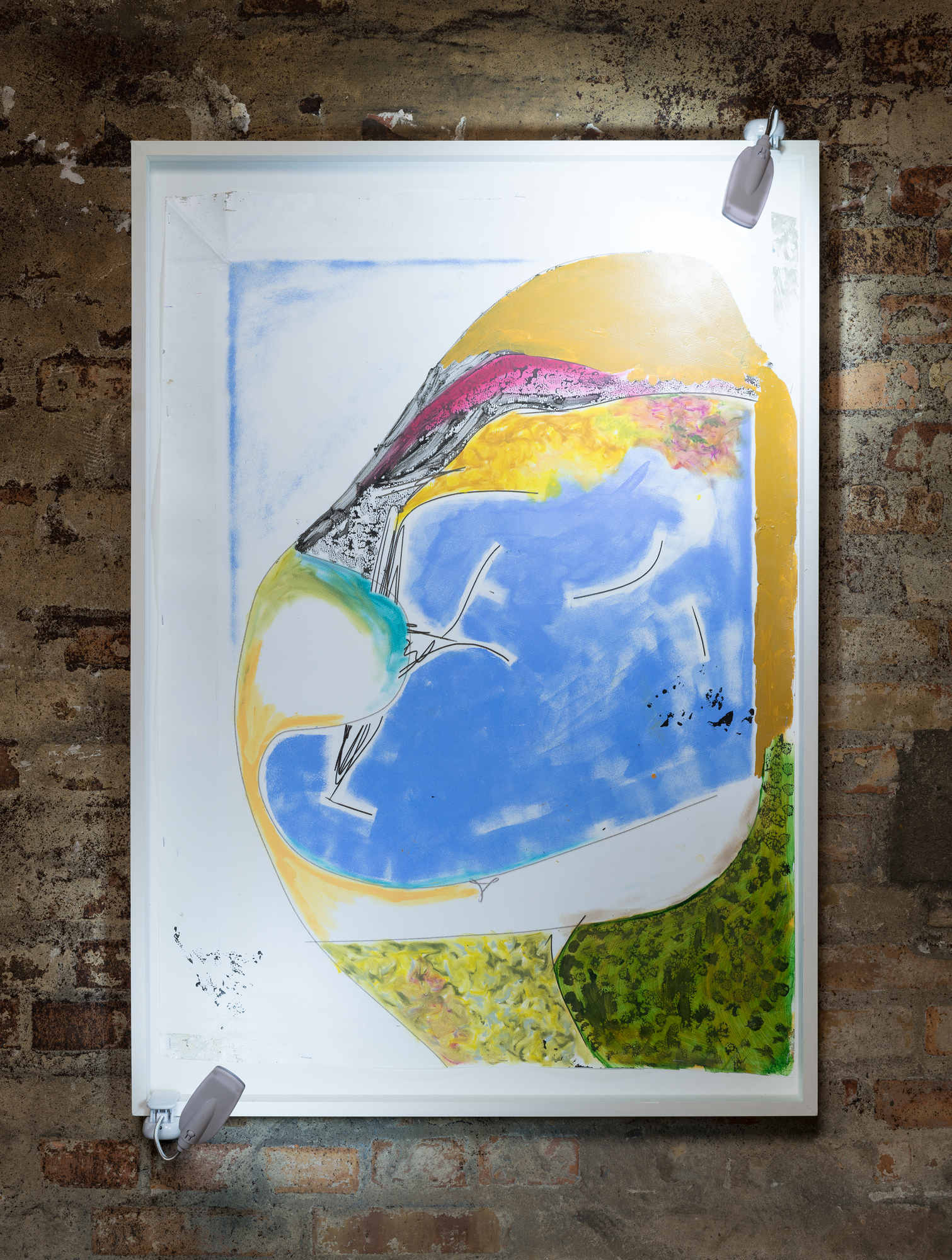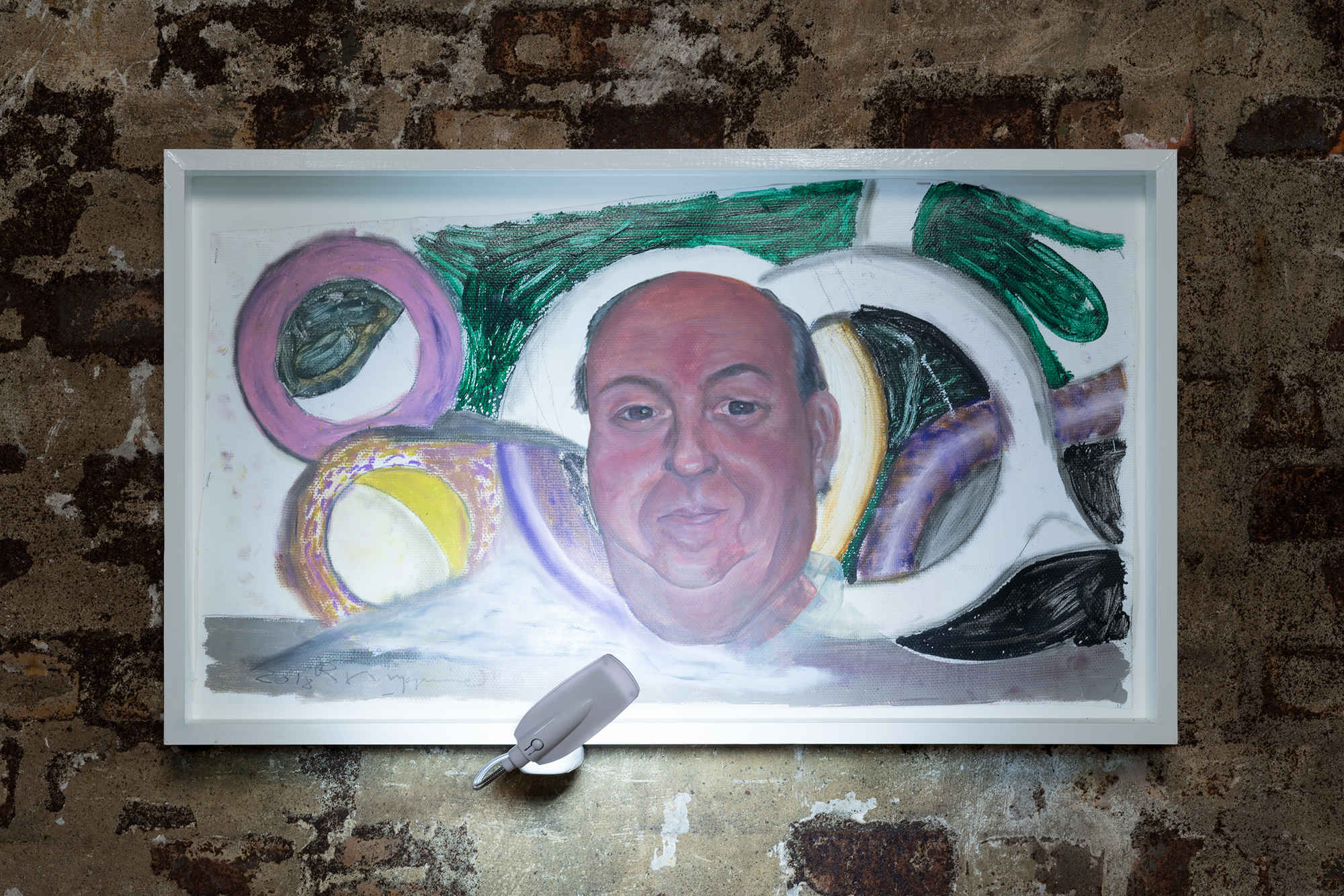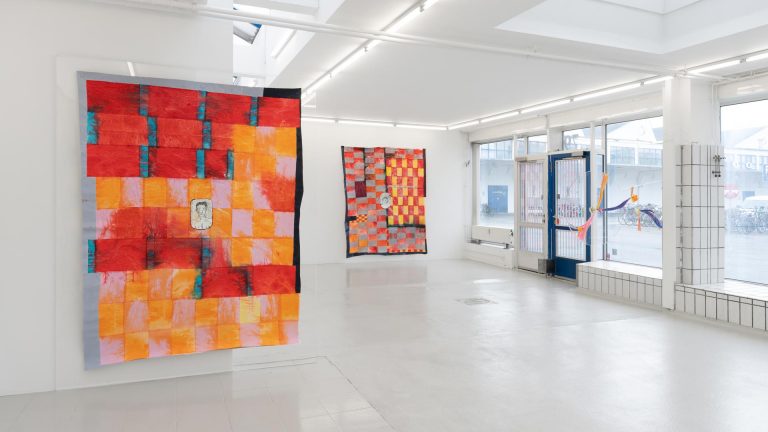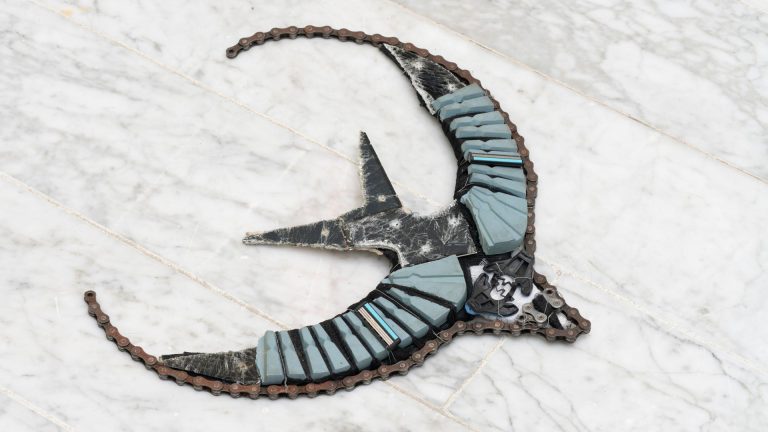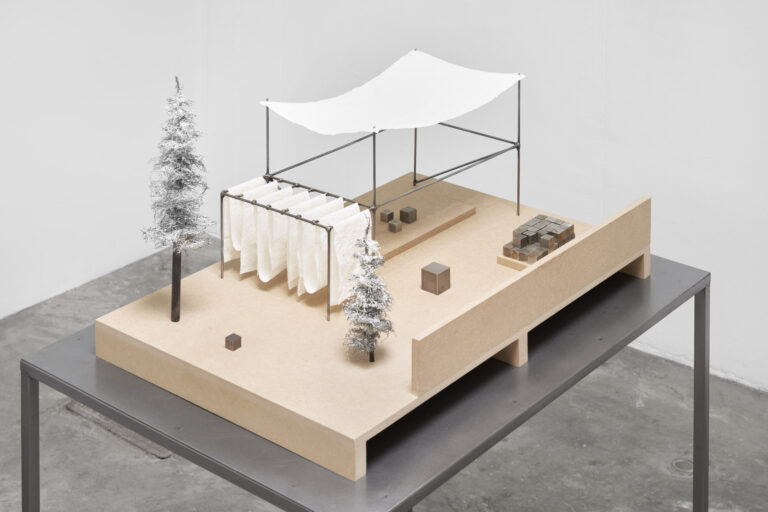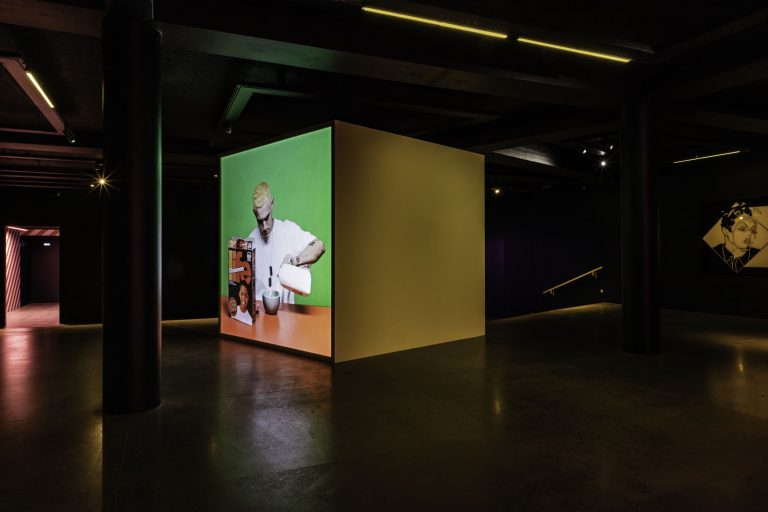Artist: Rasmus Høj Mygind and Magnus Frederik Clausen
Exhibition title: Probably / RAL 6002
Curated by: JIR SANDEL
Venue: CGK, Copenhagen, Denmark
Date: May 25 – September 8, 2018
Photography: all images copyright and courtesy of the artists and JIR SANDEL
Wheels of Karma, tegning til Martinus, is, as the title suggest a small Probably drawing for Martinus, the danish spiritual philosopher who had his daily practice near this very part of Copenhagen in the middle of the pre-vious century. The drawing is an interpretation of the wheels of Karma as re-incarnational slingshots through time/space. Gestures in pastel, acrylics and pen. It is of course a painting first and foremost. P r o b a b l y a good one at that..
Intuition (the ability also used to asses the real worth of a painting) suggest to me it’s all P r o b a b l y real, in this dimension of reality. The secret space program, the yellow triangle head being, the cooking pot is a pot twice, Corey and Clifford. Even Räel, the race car driver turned spiritual leader/self-proclaimed Maitreya of the West, son of Yahweh, (the alien who we know as God). Yes, it’s Probably all real in part or in whole. Oh man, I am painting (to deal with) the dissonans of realities in society.
The show consists of 10 abstract paintings, some of which have figura-tive portraits in them; in one sits Corey Goode, a whistleblower from the secret space program going public in detail in a big way, via the Gaia network (Gaia.com), he looks like Pingo, the future king of Den-mark, if the monarchy wasn’t being dismantled. In another painting of almost iconographic composition sits Clifford Stone, like Goode also a so-called intuitive empath who worked for the US military and now travels to talk about his many encounters with ET entities. In my mind they are both heroes and should Probably be in more paintings. In a third work myself as a young goofy man in search of meaning, with a human-oid alien and Räel, painted from a 2006 photo taken at a conference with the Raelian Movement, of which I was a happy member for some years. In other works there are portraits of a cooking pot, a tea pot and a reading lamp, generic everyday objects used for life essentials as eating, drinking, reading. And a giant space rock, Oumuamua.
This series of activated rectangles are specifically produced with this location in the old machine tower of Carlsberg in mind. The title of the show is the only clue to Carlsberg itself however, riffing on the company’s (too) cheeky add campaign “Probably the best beer in the world..” The word, in part or in whole, is painted on the side of the slightly oversized wooden box- frame each painting is mounted within, mimicking old time beer boxes from a bygone age or from an alternate timeline.
The paintings are mounted in the hight of either my nose or my belly-button.
– Rasmus, Copenhagen, May 2018
Green, a colour of life, represents freshness and security. While it creates a restful atmosphere, it also possesses the intense power of nature.*
The construction of the City Circle Line and the M4 line, expansions of the current Copenhagen Metro system, began in 2011. By 2030, once the twenty-four new stations will be operative, the daily ridership is expected to tri-ple from 200,000 to 600,000 passengers. Due to the engineering works, many streets and squares in Copenhagen have been screened off with high fences to separate the building sites from properties and traffic routes. These walls, made of green painted plywood**, have been a permanent part of the cityscape for the past few years now.
On show in OKKERRUMMET at Carlsberg Byens Galleri & Kunstsalon is a replica of two sections of the metro fence by Magnus Frederik Clausen – an object that for the artist has both a very specific function and a strong symbolic meaning.
A wall is usually built to separate people and spaces, but in this case it is a means to the end of connecting neighbourhoods and making the citizens move easier and faster. With rapid transit infrastructure getting widespread, the city expands in dimension and density. Art plays quite a crucial role in this phenomenon, as low-income artists and creative communities often increase the flair of semi-peripheral, unattractive areas until the moment they become too expensive for their budget and they resettle further away from the city center.
People inhabiting the city experience urban development on a daily basis, but rarely remark it on a conscious level. In this sense, the metro fence is not only a functional element of the incessant city growth, but also a metaphor of it: by occupying a peripheral spot in our line of sight, the green wall is a substantial presence that anyhow gets hardly observed with full intent.
In line with the long tradition of the ready-made, Magnus Frederik Clausen trusts the ability of modest objects to carry meaning, and to appear familiar and yet so radically alien when displaced – with the addition that the object is here not appropriated but mocked, and located in a room that is far from being a white-cube.
The exhibition space is in fact nested into a building that has played a quite crucial role in Copenhagen’s urban development, which amplifies the impact of the sculpture on display. Once triggered, the references in RAL 6002 will start bouncing into each other like in an echo, eventually composing a call for awareness towards our everyday urban landscape and the place we occupy in it.
*https://www.jotun.com/de/en/b2b/colours/Powder-colours/RAL/RAL_6002.aspx
**The green shade is the standard that unifies all metro fences in Copenhagen, that can be built in different structures and heights
Paola Paleari, Copenhagen, 2018

